Shop the local market for fresh produce
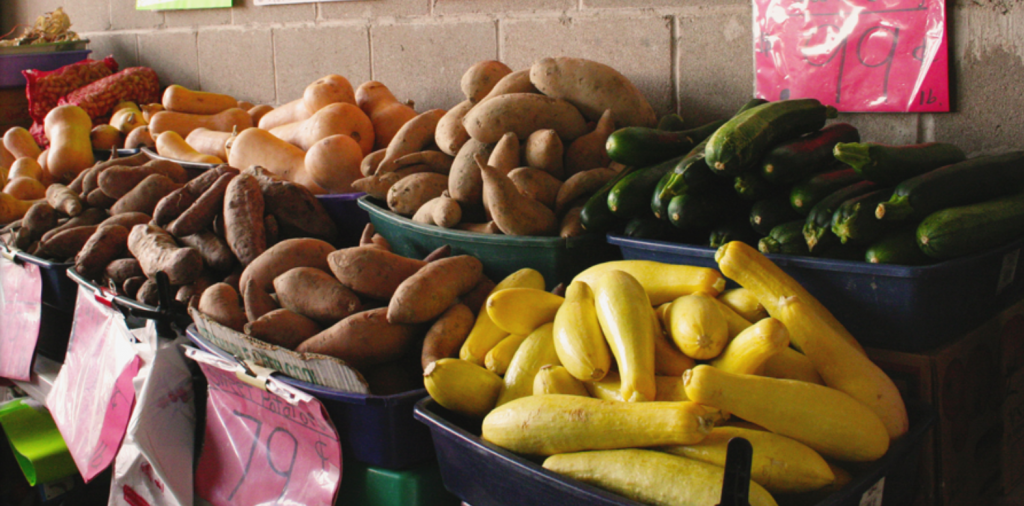
Farmers Markets are packed with fresh summer fruits and vegetables. Watermelons, cantaloupes, fresh corn, cucumbers, tomatoes and squash are just a few of the food items found at many local markets. While, I don’t frequent Farmers Markets often (mainly due to the location from my home and because my local market is not open year-round), I like to go at this time of the year. There are so many varieties of delicious, freshly grown foods (especially fruits and vegetables) and homemade goodies such as jams/jellies, pickles. There are also baked items, which are typically local favorites made by hometown residents. Visiting the market also allows for interaction with farmers, neighbors and friends.
During a recent purchase, a friend noticed that the strawberries he bought from the local grocery store were grown by a local farmer from the county. He was so excited to know that his purchase is helping to support the local farmer in our community.
While, I really like the offerings of a Farmer’s Market, there are some valid reasons to purchase foods there. Firstly, they’re local and local foods are usually fresher and more nutritious. Since a shorter distance is traveled to where the food is sold, most local fruits, vegetables, and dairy products are fresher. Some are harvested within 24 hours of being purchased! This freshness is directly related to its nutritional value, as nutritional quality degrades rapidly after harvest.
At a basic level, when you buy locally, more money stays in the community. Money that stays in the community circulates and benefits all sectors of the local economy and therefore increases the quality of life we enjoy in our communities.
Buying from local farmers helps to preserve farmland and rural culture. Whether it is directly at a farmers market or at the local foods section of a grocery store, buying a local farmer’s product helps keep that farmer farming and in business.
Food produced and marketed locally uses much less energy for transportation and storage. Reducing the energy used means less air and water pollution, which is another way we can help sustain our resources for future generations.
When food is marketed locally, farmers aren’t limited to growing varieties that are bred for long distance shipping and long shelf lives. Local foods are often heirloom varieties that have been passed down through generations, which are usually especially delicious!
Finally, since local foods are not stored for long periods of time or transported long distances, fewer post-harvest treatments are needed. Wax coatings to prevent water loss and fungicides to prevent decay are used to preserve fruits and vegetables that travel long distances.
Local foods are really a win-win and something we can all support.
I encourage you to be a patron at your local Farmer’s Market. If you are unaware of the Farmer’s Markets in your area, here is a helpful resource. The North Carolina Farm Fresh is a directory of pick-your-own farms, roadside farm markets, and farmers markets throughout North Carolina. It is designed to help you find the freshest locally grown fruits, vegetables, plants and other items. Click the following link to find a market in your area: http://www.ncfarmfresh.com/index.asp
Stephanie
Stephanie is the EFNEP Extension Associate for counties in the Southeast Unit.
Snack Bars
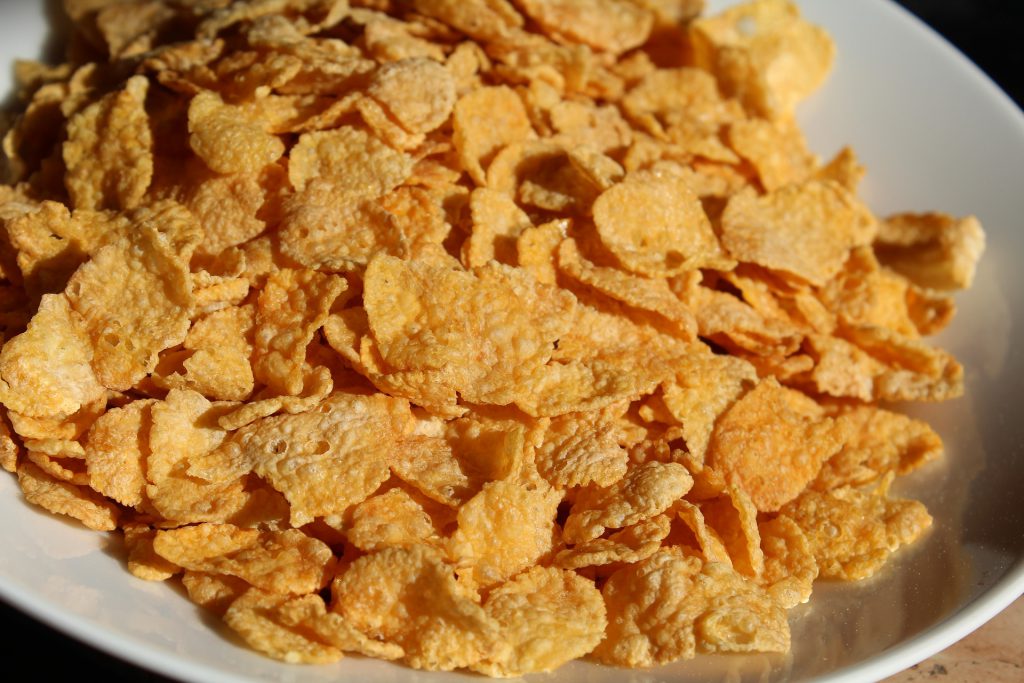
Makes 2 servings
Serving Size: 1 bar
Ingredients
- 1/2 cup peanut butter or alternative*
- 1/4 cup nonfat dry milk (optional)
- 2 tablespoons honey
- 1 large shredded wheat biscuit or one to two cups of other cereal (low-fat granola, whole-grain cornflakes, shredded wheat squares)
- Vegetable cooking spray
- 1/4 cup raisins or nuts, chopped (optional)
*A peanut butter alternative called WOW butter and is available for purchase at certain retailers
Directions
- Crush a portion of shredded wheat biscuits or cereal with your hands or a spoon and place into the mixing bowl.
- Add all of the ingredients together in the mixing bowl.
- Press the mixture firmly into an 8 by 8 inch pan.
- Cut into squares and serve.
Pizza Food Group Funny Face
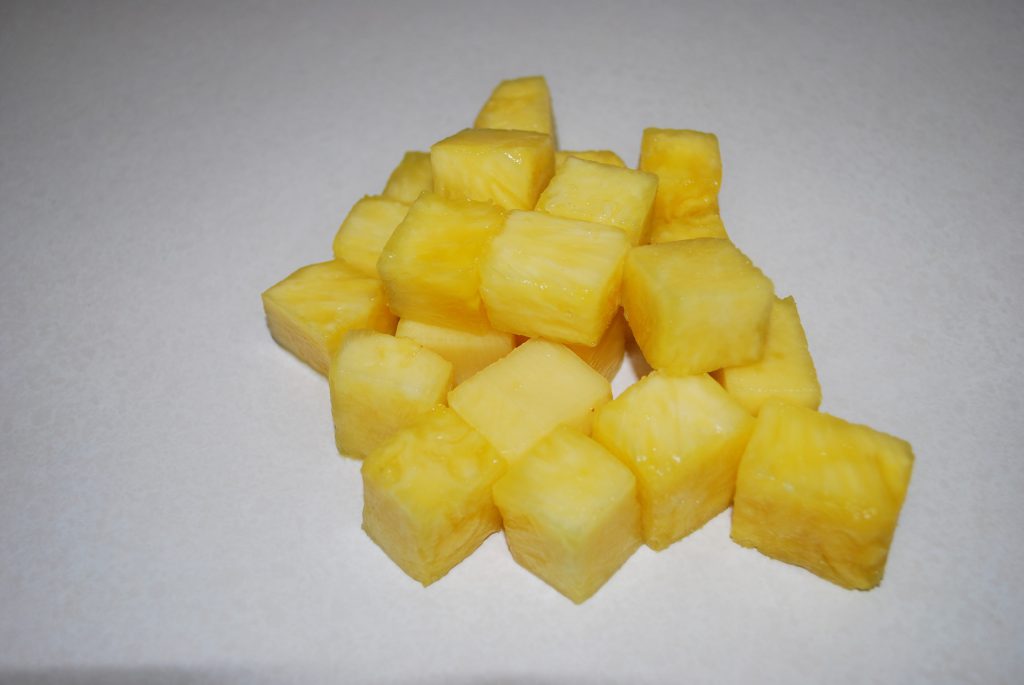
Makes 2 servings
Serving Size: 1 slice
Ingredients
- 1 whole grain English muffin
- 2 tablespoons of pizza or spaghetti sauce
- 1/4 cup cup of shredded mozzarella cheese
- 1/4 green pepper, cut into various sized pieces
- 1/4 cup cubed ham pieces
- 2 tablespoons pineapple tidbits
Directions
- Use an English muffin as a base for a funny face and spread one tablespoon of pizza or spaghetti sauce. Place on a small plate. To make the face, arrange:
- Cheese as hair
- Green bell pepper as nose
- Ham pieces as a mouth
- Pineapple slices as eyes
- Heat it up in the microwave for about 15 seconds. Remove carefully as plate may be hot. Enjoy!
Super Stir-Fry
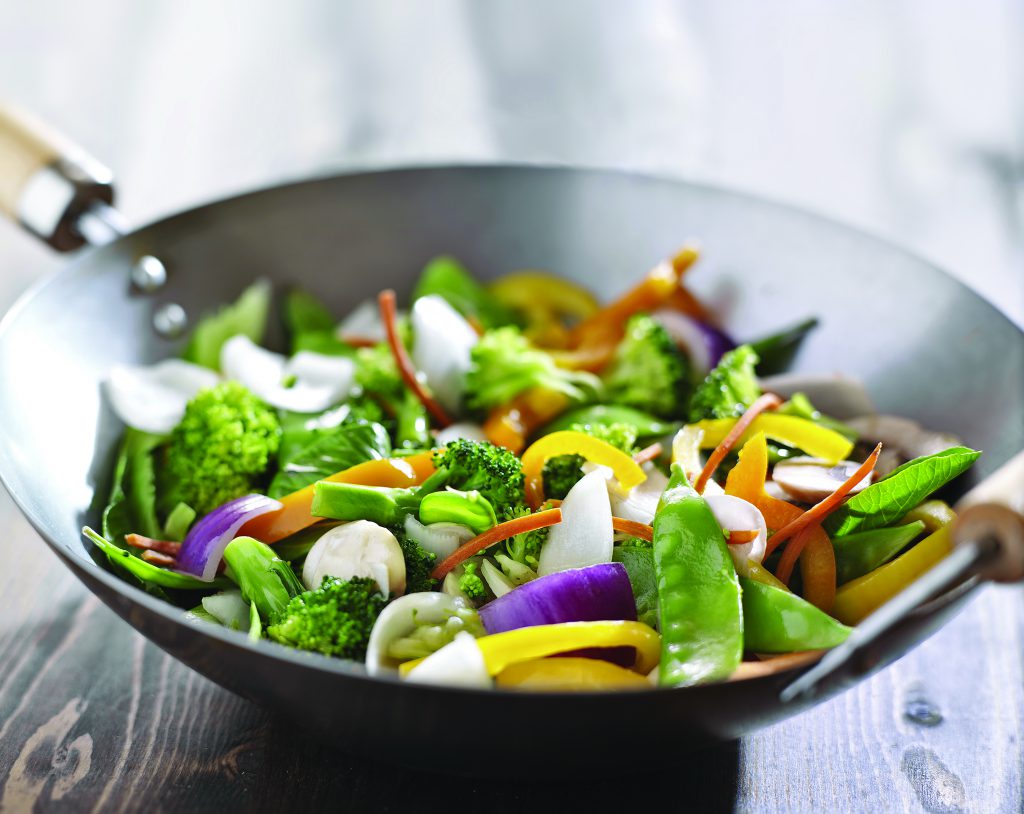
Ingredients
- Choose 5 vegetables (1/2 cup of each)
- Onion
- Broccoli
- Celery
- Carrots
- Peppers
- Mushrooms
- Squash
- Zucchini
- Cauliflower
- Choose 1 Starch (1 cup per person, cooked according to package directions)
- Brown Rice
- White Rice
- Rice Noodles
- Whole-Wheat Spaghetti
- Noodles
- 1/4 cup Stir-Fry Sauce (recipe follows)
- 1-2 tablespoons vegetable oil
Directions
- Wash and chop selected vegetables into small evenly sized pieces. You may cut them into circles, strips, or cubes as desired. A variety of shapes will make the stir-fry more pleasing to the eye.
- Heat a small amount (1 tablespoon or less) of vegetable oil over high heat in a 10-inch frying pan, electric skillet, or wok.
- Keeping the heat high, add vegetables to the pan in order of firmness–harder foods first and ending with the softest foods.
- Toss vegetables during cooking to keep them from sticking. When stir-frying, cooked vegetables should still be crisp and retain their bright color.
- Add sauce to taste (about 1/4 cup). Stir-fry until all vegetables are thoroughly coated.
- Serve with starch of choice.
Stir-Fry Sauce
Makes 1/2 cup
Ingredients
- 2 tablespoons sodium-free beef bouillon
- 2 tablespoons apple cider vinegar
- 1 teaspoon dark molasses
- 1/8 teaspoon ground ginger
- Dash of black pepper
- 1/8 teaspoon garlic powder
- 1 cup water
- 2 tablespoons of cornstarch
Directions
- Combine all ingredients in a saucepan and boil gently, uncovered, for 5 or more minutes or until sauce is reduced to 1/2 cup. When cooked, pour into lidded jar and keep in the refrigerator. Stir before using.
Broccoli Salad
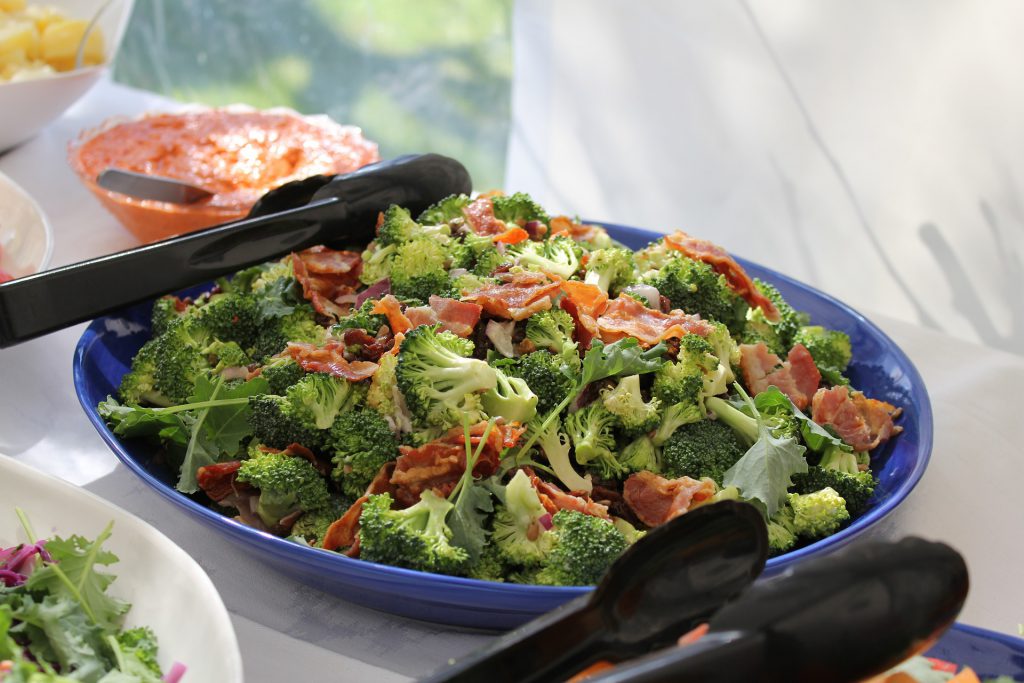
Makes 8 servings
Serving Size: 1/2 cup
Ingredients
- 1 bunch broccoli or 1/2 bunch broccoli and 1/2 head of cauliflower, washed and cut into pieces
- 2 pieces of bacon, cooked crisp and crumbled
- 1/4 cup onion, chopped
- 1/2 cup raisins
- 1/2 cup low-fat mayonnaise or plain non-fat yogurt
- 2 tablespoons apple cider vinegar
- 2 tablespoons sugar
Directions
- Make dressing of mayonnaise, vinegar, and sugar.
- Combine broccoli, bacon, onion, and raisins.
- Stir in dressing.
- Cover and refrigerate for at least 1 to 2 hours before serving to allow flavors to blend.